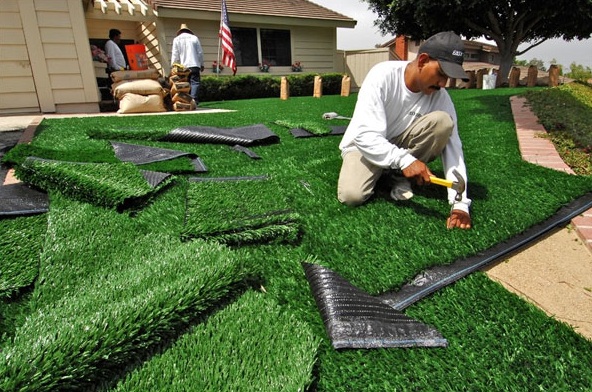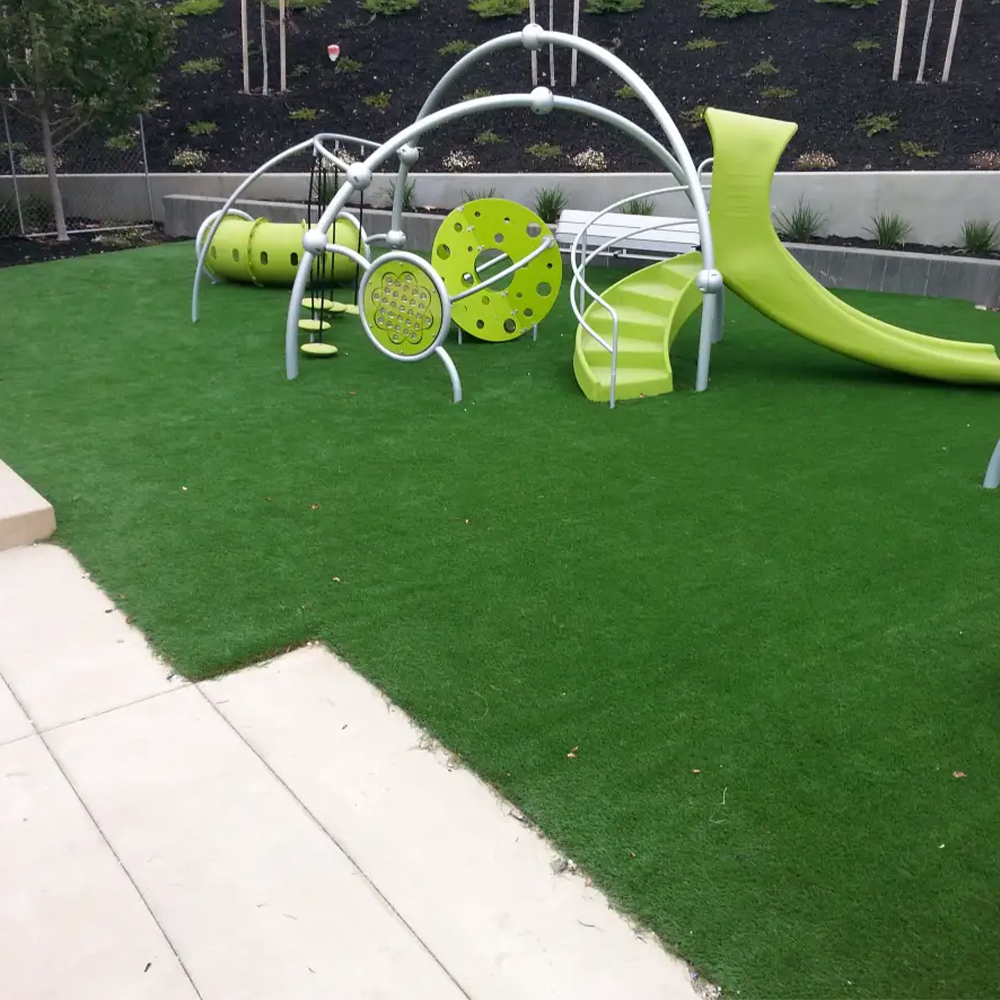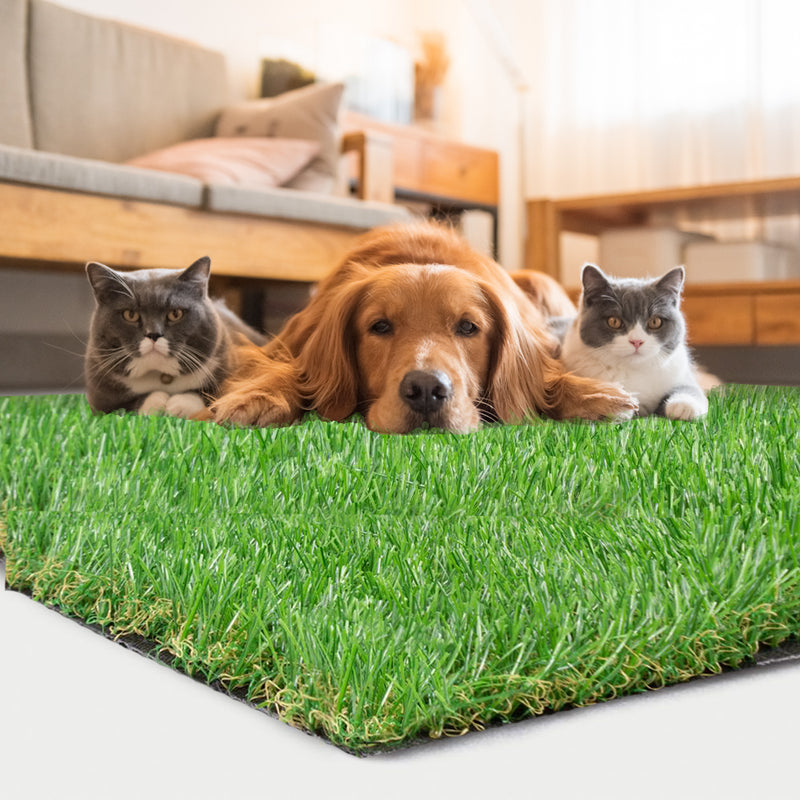Explore the Environmental Advantages of Opting for Synthetic Grass Solutions
The fostering of synthetic grass options presents a compelling chance to deal with pushing environmental obstacles. By significantly lowering water usage and lessening the application of unsafe chemicals, these options not only promote sustainable landscaping however also protect local environments. Additionally, the reduced carbon impact connected with reduced maintenance tasks contributes to an extra lasting approach to land administration. However, the implications of these advantages prolong past plain preservation efforts, questioning regarding their lasting influence on habitat conservation and total eco-friendly equilibrium. Discovering these measurements reveals a complicated interplay worth taking into consideration.
Water Conservation Conveniences
One of the most considerable benefits of artificial turf is its capability to conserve water. In comparison, man-made grass does not need watering, substantially lowering the overall need for water sources.
By eliminating the requirement for regular watering, synthetic grass adds to lasting landscape methods and helps mitigate the environmental influence of excessive water usage. Moreover, the conservation of water reaches the decrease of drainage, which can result in soil erosion and waterway pollution.
Additionally, the installment of fabricated turf allows property owners and towns to assign water sources extra efficiently, concentrating on vital usages such as alcohol consumption water and farming. The shift towards artificial lawn not only advertises accountable water use however also straightens with broader environmental goals intended at maintaining natural sources.
As neighborhoods increasingly focus on sustainability, the water conservation advantages of man-made grass offer an engaging situation for its fostering in residential and industrial landscape design jobs.
Decreased Chemical Usage
The change to synthetic grass substantially lowers the dependence on chemical therapies commonly used in all-natural turf maintenance. Standard grass administration generally entails the application of fertilizers, pesticides, and herbicides to promote development and control insects. These chemicals can present threats to human health and wellness, neighborhood wild animals, and the setting, contributing to dirt and water contamination.
In contrast, fabricated turf eliminates the demand for these damaging substances. By decreasing the release of artificial compounds into the ecological community, fabricated lawn promotes much healthier soil and water systems.
In addition, the absence of chemical overflow related to synthetic grass installments assists protect regional rivers from pollution, supporting water life and keeping biodiversity. Turf installation phoenix az. As communities progressively focus on sustainable methods, going with synthetic grass provides a practical remedy that straightens with ecological preservation goals. Through this change, homeowner can appreciate lavish green spaces without endangering environmental health, leading the way for an extra sustainable future
Reduced Carbon Impact

Furthermore, the installation of synthetic grass can cause significant water conservation. Natural lawns call for considerable amounts of water for irrigation, which not only contributes to the carbon footprint associated with water removal and therapy however additionally stress neighborhood water resources. On the other hand, synthetic lawn needs very little maintenance, calling for no watering, therefore dramatically decreasing water use and its connected energy costs.
Furthermore, the longevity of synthetic grass adds to its lower carbon influence. With a lifespan of approximately 15 years or even more, the need for regular replacements is reduced, resulting in less waste and reduced power usage in production and throwing away standard turf options. On the whole, synthetic grass offers a lasting choice for ecologically mindful landscape design.
Environment Conservation
Habitat conservation is a crucial consideration in the argument over landscape design selections, particularly when contrasting fabricated turf to all-natural turf. Natural grass lawns typically call for extensive maintenance, consisting of using pesticides, fertilizers, and herbicides, which can detrimentally impact local environments. These chemicals can leach right into the soil and rivers, hurting indigenous plants and animals and interfering with neighborhood habitats.
On the other hand, man-made turf provides an opportunity to decrease the environmental footprint of landscaping. By selecting artificial turf, home owners can reduce the disturbance of natural habitats connected with conventional yard treatment techniques. Synthetic grass removes linked here the need for unsafe chemicals, thus safeguarding neighboring wildlife and preserving the honesty of bordering environments. In addition, the installation of synthetic grass can bring about the conversion of previous turf areas into even more biodiverse landscapes, such as pollinator gardens or indigenous plant locations, which can sustain local wild animals.
Ultimately, the shift to synthetic grass not just preserves water and decreases maintenance efforts but likewise cultivates an extra unified connection in between human activities and the native environment, promoting habitat conservation at the same time.
Long-Term Sustainability
Lasting sustainability is a vital consider reviewing the advantages of fabricated lawn over traditional turf lawns. Among one of the most substantial benefits of man-made turf is its resilience; it can last up to 15-20 years with very little maintenance, whereas natural yard calls for constant reseeding and replacement. This longevity reduces the requirement for consistent resources, such as water, fertilizers, and chemicals, which are necessary for maintaining a healthy yard yard.
Additionally, artificial lawn adds to a reduction in carbon exhausts connected with lawn treatment equipment. Traditional lawns typically need gas-powered lawn mowers, trimmers, and blowers, every one of which add to air contamination. Phoenix turf companies. In comparison, synthetic turf eliminates the demand for such look these up devices, advertising a cleaner environment
Furthermore, the production of synthetic grass progressively makes use of recycled products, improving its sustainability profile. As makers adopt environmentally friendly techniques, the environmental impact of synthetic grass continues to diminish.

Verdict
The fostering of man-made grass solutions provides substantial environmental benefits, consisting of substantial water preservation, decreased reliance on harmful chemicals, and a lower carbon impact. Artificial turf aids in protecting all-natural environments by minimizing land disruption More Bonuses and advertising long-lasting sustainability via the use of resilient materials. Jointly, these aspects highlight the capacity of synthetic grass to contribute favorably to environmental wellness and provide a feasible option to conventional landscape design techniques in a progressively resource-conscious globe.
In comparison, artificial lawn does not need watering, significantly lowering the general demand for water resources. By decreasing the launch of synthetic compounds into the environment, man-made lawn promotes healthier soil and water systems.
Furthermore, the installment of artificial lawn can result in significant water conservation. In contrast, fabricated lawn requires minimal upkeep, requiring no watering, consequently substantially reducing water use and its connected power prices.
